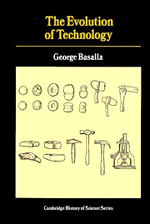Book contents
- Frontmatter
- Contents
- Preface
- I Diversity, Necessity, and Evolution
- II Continuity and Discontinuity
- III Novelty (1): Psychological and Intellectual Factors
- IV Novelty (2): Socioeconomic and Cultural Factors
- V Selection (1): Economic and Military Factors
- VI Selection (2): Social and Cultural Factors
- VII Conclusion: Evolution and Progress
- Bibliography
- Sources of Quotations
- Index
VI - Selection (2): Social and Cultural Factors
Published online by Cambridge University Press: 05 August 2014
- Frontmatter
- Contents
- Preface
- I Diversity, Necessity, and Evolution
- II Continuity and Discontinuity
- III Novelty (1): Psychological and Intellectual Factors
- IV Novelty (2): Socioeconomic and Cultural Factors
- V Selection (1): Economic and Military Factors
- VI Selection (2): Social and Cultural Factors
- VII Conclusion: Evolution and Progress
- Bibliography
- Sources of Quotations
- Index
Summary
The process by which a novel artifact is selected for replication and inclusion into the life of a people involves various factors, some more influential than others. The previous chapter concentrated on economic and military necessity as selecting agents but in the case of the waterwheel, nuclear reactor, and supersonic transport other forces, notably social and cultural ones, were clearly at work. Ancient and medieval religious beliefs, a bias toward the acceptance of advanced technology, and Utopian energy myths each played an ancillary role in the selection of these innovations. In this chapter the social and cultural factors governing selection will be raised to a position of central concern and examined with the aid of cross-cultural comparisons.
Technology and Chinese Culture
The influence of cultural values and attitudes on technological choices is more readily apparent in examples drawn from remote cultures than from those that share our Western outlook. Technology is so intimately identified with the cultural life of a people that it is difficult for an indigenous observer to gain the objectivity necessary for critical appraisal. Fortunately, Chinese history contains a wealth of material on technology and culture, much of which has been studied by modern Western historians. Therefore, it is of Chinese civilization that we first ask the question, How may culture affect the selection and replication of technological novelties?
- Type
- Chapter
- Information
- The Evolution of Technology , pp. 169 - 206Publisher: Cambridge University PressPrint publication year: 1989



